
Skycar City
The inevitable and total surrender towards a process-oriented approach radically changes urban planning and its architectural products. It will lead to another “city”: a city that can reformulate itself, a city that is conscious of its gained knowledge. It is a city that can compare, analyze, optimize, adapt and create alternatives: The Skycar City. In this new type of metropolis, traffic lights are replaced with a car’s on-board navigational system, with parking garages in any location, with a revolutionized address system, the repercussions are endless…
- Location
- Rotterdam, Netherlands
- Status
- Competition
- Year
- 2006–2006
- Programmes
- Mixed use
From the despair of commuters during rush hours let us construct a hypothesis about the future and that cars will be able to ‘fly.’ How will this hypothesis affect our cities? Could these skycars solve current weaknesses and the negative connotations by being environmentally friendly, noiseless and affordable? Wouldn’t it be nice, if those skycars could move freely around and between the buildings, over landscapes? The space, that is currently required for infrastructure, evaporates substantially! For example, over half the area of Manhattan Island is covered by roads. As a result, only 44% of the ground plane is available for development. Skycars would make streets redundant! They would cease to exist! This shift -quite possibly- leads to a city with streets on every level or even to no need of streets at all. It creates a city without –initially- traffic control! In this city, the car’s onboard navigational systems will replace traffic lights. Parking problems disappear as cars could park directly in the sky, hooked or docked to all types of programmatic elements, in any location.
Orientation radically changes: the city won’t use axes or streets any longer and will develop a completely revolutionized address system, which will be based on coordinates. A city without signals, all navigation will be regulated via the skycar screen. Destinations feel closer. Time becomes more intense. The city becomes bigger, denser.
Such an invention requires a sincere new urbanism. Currently, cities are constructed in a more or less two-dimensional way. Zoning determines urban planning and protects cities from densification. This issue becomes increasingly urgent in times of future spatial scarcity. The development of massive space desires a spatial clustering. The skycar liberates current two-dimensional zoning and enlarges the potential for truly three-dimensional cities and thus for greater capacities. How will this Skycar City appear? What shape will it take on? Its varied movements and speeds create a new maximization of space. Initially, under current spatial circumstances, a city of free movement can be considered. The movement is determined by the right positioning of the program.
However, as densification continues, more air-control requirements are implemented. In the initial years of Skycar City, automatic systems can meet this demand, but as the city grows and develops, three-dimensional zoning appears: main tracks and side zones, fast tracks, slow zones. What paths do we imagine? How should we start the design with all its dimensions? What measurements should we design it in? As well as the cars could be in front or behind us, they also could be to our left, right and even above and below us! How should we imagine the required safety zones that surround the skycar? Will the zones ensure an easy maneuverability? How should we react in a moment of a sudden need of moving the car manually -in case of emergency-, will we require a visual and individual control? What would be the optimal buffer zone dimension? The vehicle will be surrounded by a cone of emptiness, which will be asymmetric in nature, due to the difference of the reaction times. What will the character of the empty bubbles be like? What could be their overlap? What happens when a car needs to shift from one track to another? What nodes or intersections could be possible?
Gallery
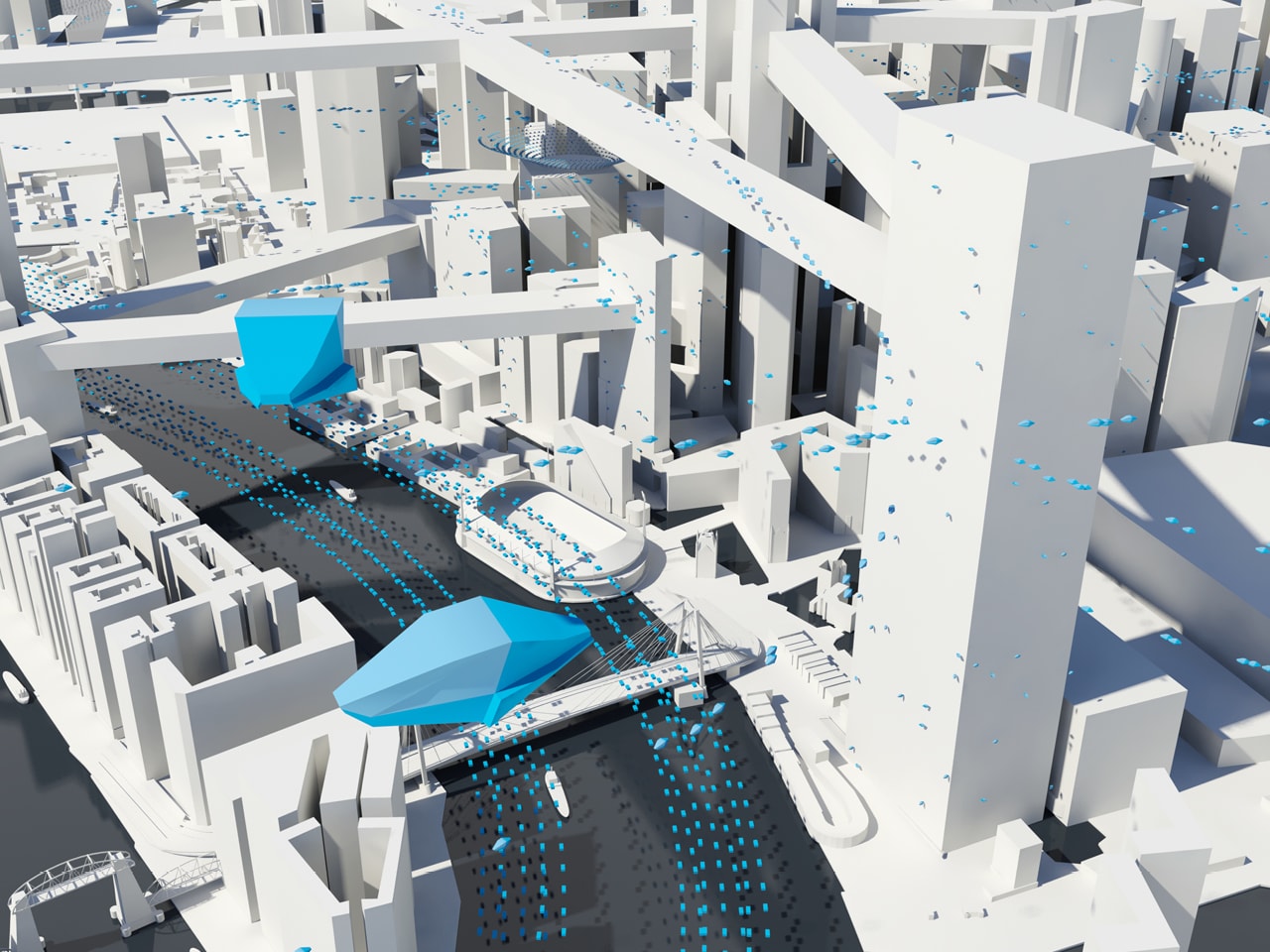
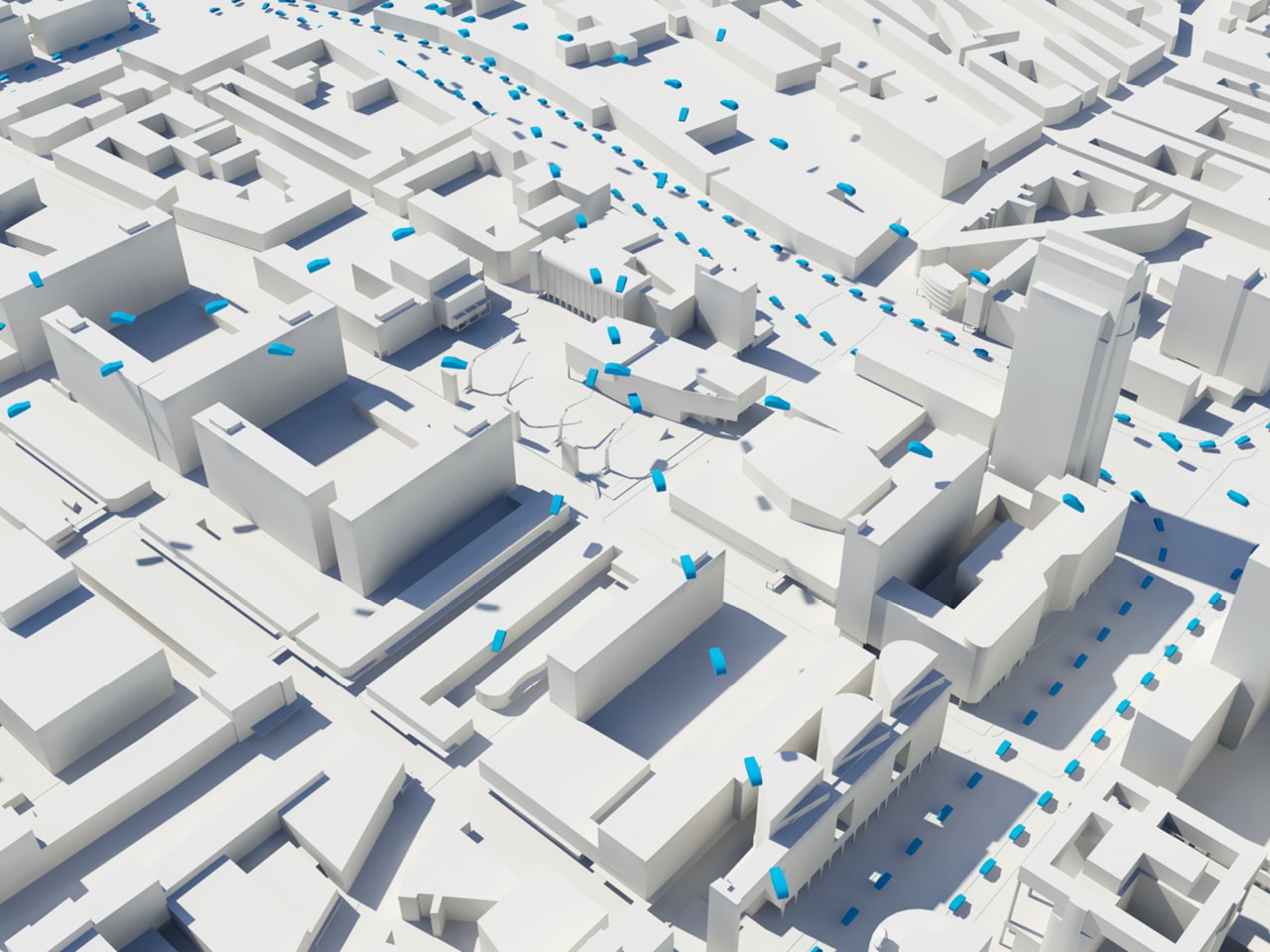
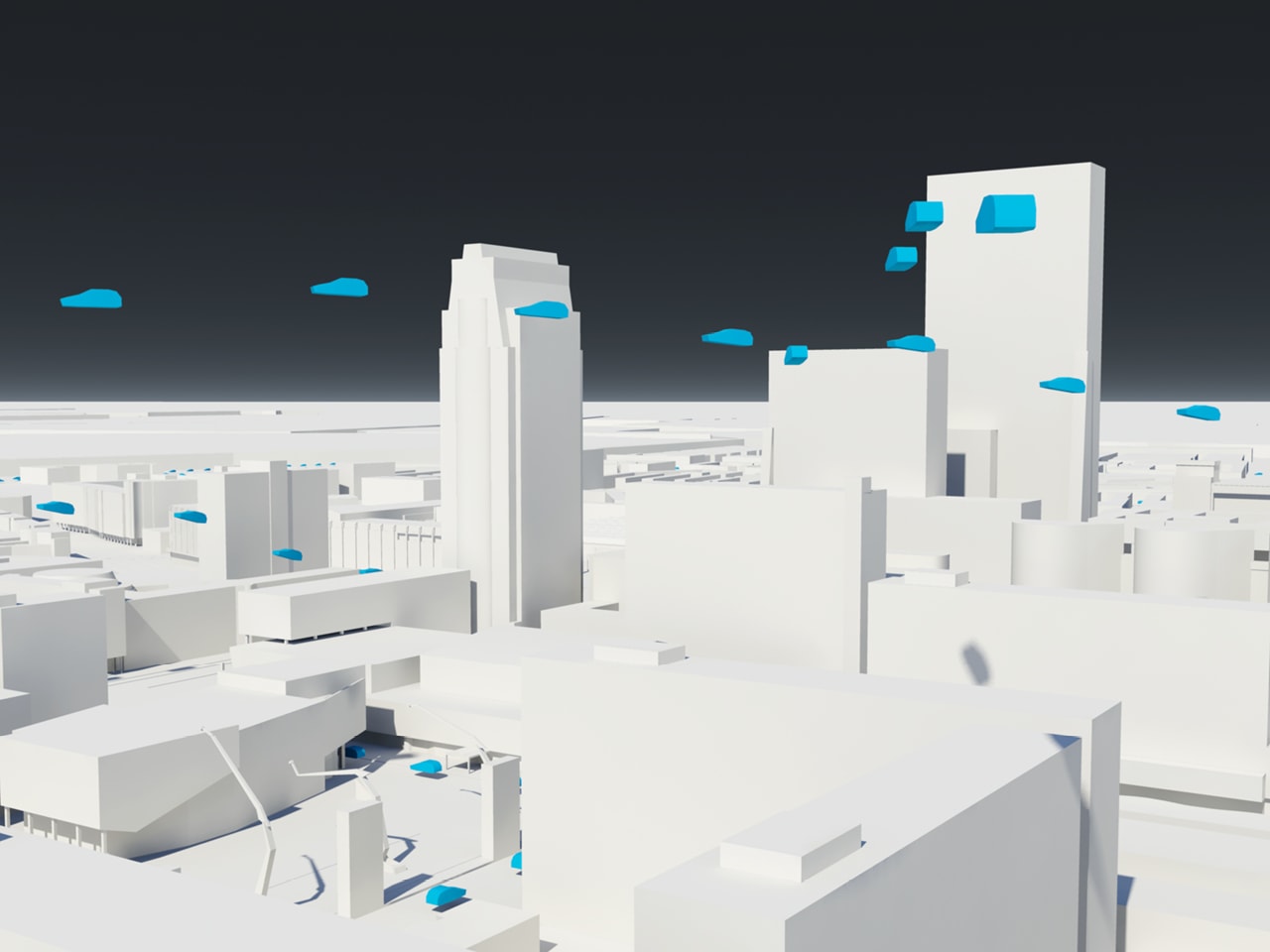
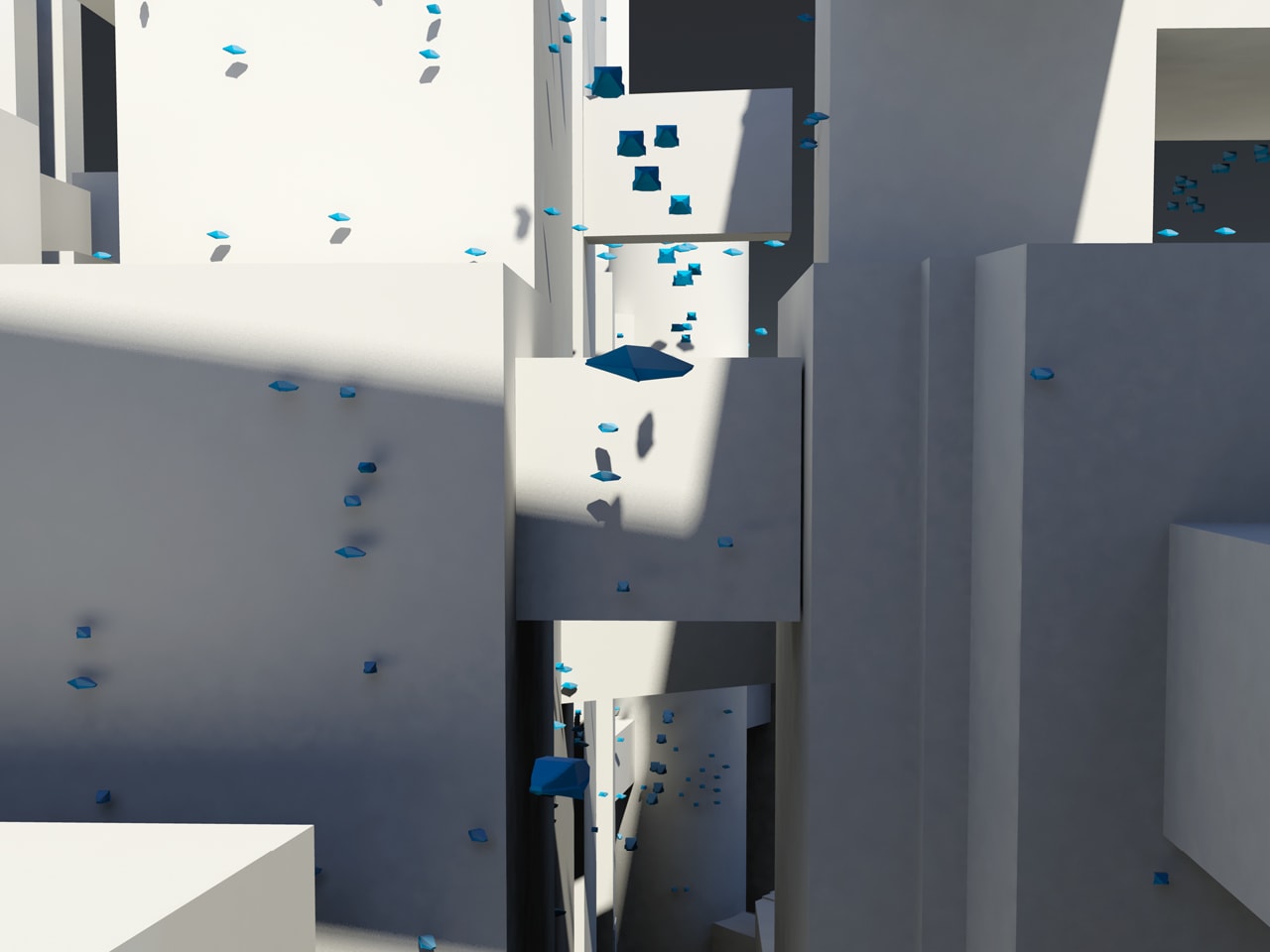
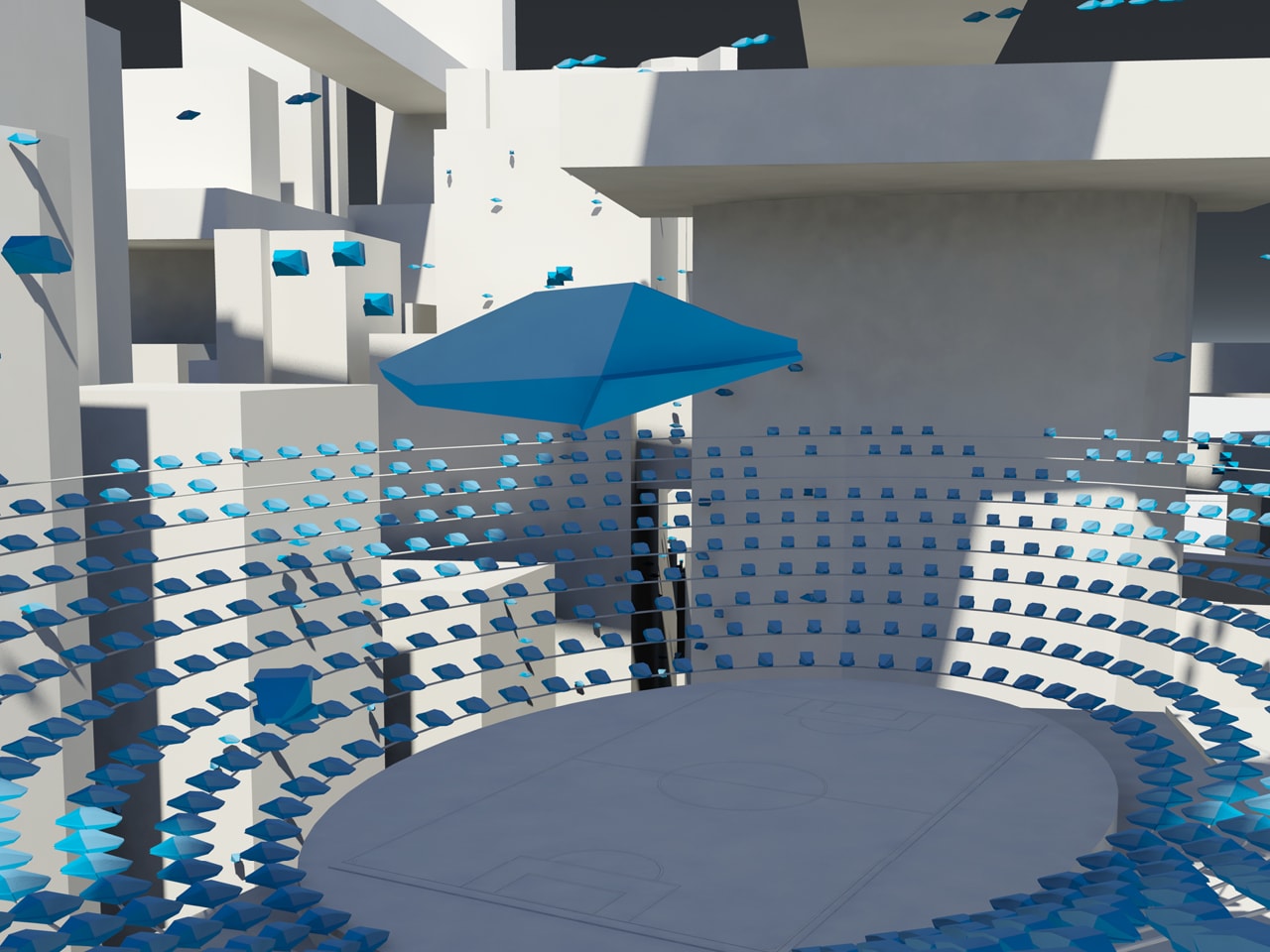
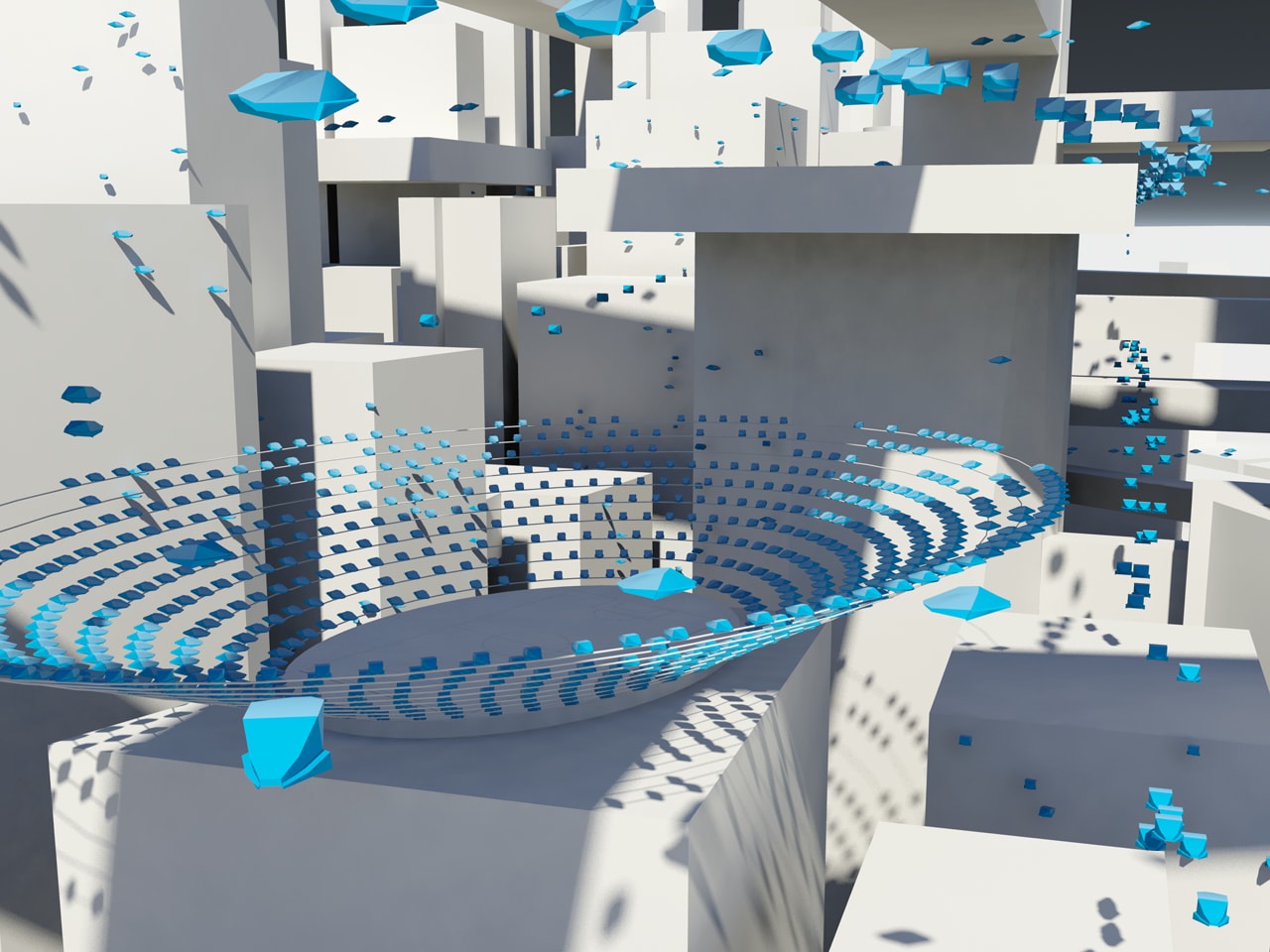
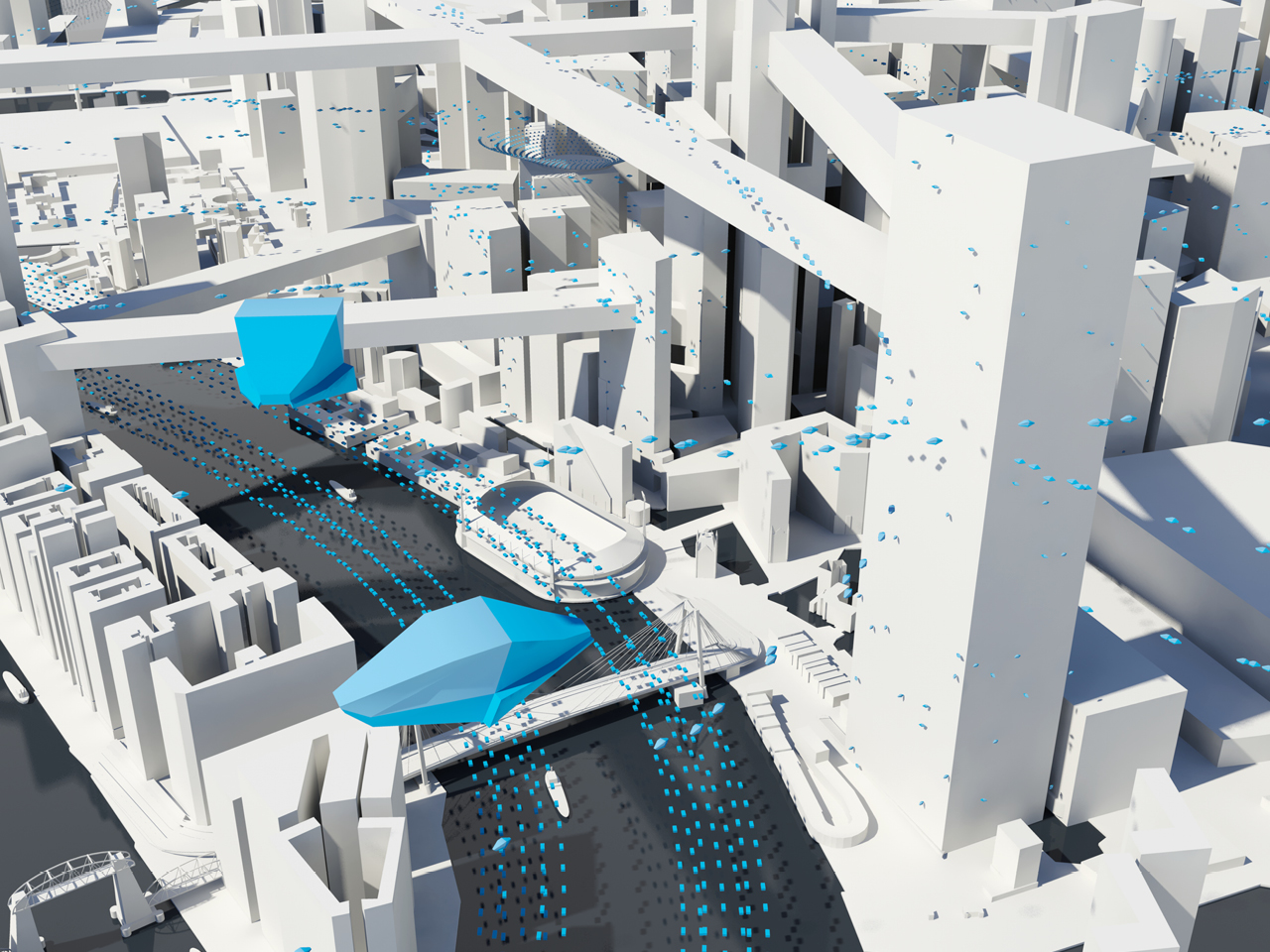
Credits
- Architect
